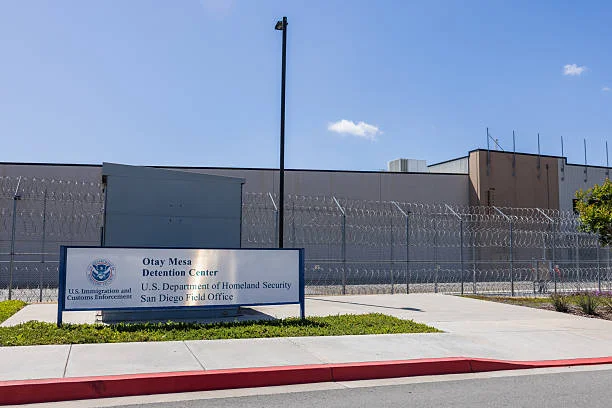When someone you know gets arrested in San Diego County, finding them quickly becomes the first priority. The Sheriff’s Department maintains an online system that lets you locate inmates, check booking information, and see when they might be released San Diego County Jail.
This guide walks through how to use the inmate search system, what information you’ll find, and what steps to take once you locate someone. Whether you’re looking for a family member, friend, or client, these tools provide the information you need.
Using the Who’s In Jail Online System
The San Diego County Sheriff’s Department operates a free online database called “Who’s In Jail.” This tool provides real-time information about people currently held in county jail facilities.
For San Diego central jail inmate search:
- Visit the San Diego County Sheriff’s website
- Navigate to the Who’s In Jail search page
- Enter the person’s first and last name
- Click search to view results
The system updates regularly as people are booked into and released from custody. If someone was recently arrested, their information may take a few hours to appear in the database.
What Information You’ll Find
Once you locate an inmate, the system displays several key details:
- Full name and booking number
- Date and time of arrest
- Current location within the jail system
- Booking photo
- List of charges
- Bail amount (if applicable)
- Scheduled court dates
- Expected release date (when available)
This information helps families stay informed about their loved one’s situation. The booking number becomes important for future reference when contacting the jail.
Alternative Ways to Find Inmates
If the online system doesn’t work or you need more information, several other options exist:
- Phone inquiries: Call the San Diego County Sheriff’s Detention Services Bureau. Have the person’s full name and date of birth ready. Phone lines operate during business hours, though wait times can be long.
- In-person visits: Visit the jail facility directly during visiting hours. Staff at the front desk can provide information about inmates housed at that location.
- Arrest records: Recent arrests appear in the Sheriff’s daily arrest log, available on their website. This log shows who was arrested in the past 24-48 hours.
Understanding Booking Numbers
Every person booked into the San Diego County jail receives a unique booking number. This number becomes the primary identifier for all jail-related matters.
Why booking numbers matter:
- Required for phone calls and video visits
- Needed when depositing money into inmate accounts
- Used by attorneys to access case files
- Referenced in court documents
- Helps prevent confusion with similar names
Always write down the booking number once you find it. You’ll use it repeatedly throughout the legal process.
San Diego County Jail Facilities
San Diego County operates several detention facilities across the region:
- Central Jail (Downtown San Diego): The main facility for newly arrested individuals. Most people spend their first 24-72 hours here before transfer to other locations.
- George Bailey Detention Facility (Otay Mesa): The county’s largest jail, housing both male and female inmates. This facility handles longer-term pretrial detention.
- Vista Detention Facility (North County): Serves the northern part of San Diego County. Many inmates arrested in Vista, Oceanside, or Carlsbad end up here.
- Las Colinas Detention and Reentry Facility (Santee): The primary facility for female inmates in San Diego County.
- South Bay Detention Facility (Chula Vista): Houses inmates from the southern part of the county.
An inmate may move between facilities during their time in custody. The online system updates these location changes.
What to Do After Finding Your Loved One
Locating an inmate is just the first step. Several actions should follow:
- Contact an attorney: Criminal charges require legal representation. San Diego defense firms like David P. Shapiro Criminal Defense Attorneys handle cases throughout the county and can provide guidance on the charges, bail, and court proceedings.
- Check bail information: If bail has been set, you can begin the process of posting bond. The Who’s In Jail system shows the bail amount and bail schedule.
- Plan for communication: Inmates can make phone calls and receive visits. Each facility has specific rules about visiting hours and phone privileges. Check the Sheriff’s website for current policies.
- Gather important documents: Birth certificates, identification, and proof of residence may be needed for various legal proceedings.
Timing and System Updates
The Who’s In Jail system doesn’t update instantly. Most people appear in the database within 2-6 hours of booking, though processing times vary based on how busy the facility is.
If you can’t find someone right away, wait a few hours and search again. People who were arrested may be in transit between facilities, still being processed, or already released.
When to Seek Legal Help
Some situations demand immediate legal attention:
- Bail is extremely high or denied
- The charges include violent offenses
- Your loved one has prior convictions
- They face potential deportation
- They’re being held without clear charges
Criminal defense attorneys can intervene early to protect rights, request bail reductions, and begin building a defense strategy. Waiting days or weeks to hire an attorney can limit your options.
Resources for Families
Dealing with a loved one’s incarceration brings stress and confusion. These resources can help:
- San Diego County Sheriff’s Department: The official source for custody information, visiting rules, and facility locations.
- Public Defender’s Office: Provides attorneys for those who can’t afford private counsel.
- Bail bond companies: Licensed agencies that post bail for a fee, typically 10% of the total bail amount.
- Community organizations: Local groups offer support services for families affected by incarceration.
The “Who’s In Jail” tool gives families the information they need to support their loved ones through a difficult time. From locating inmates to checking charges and court dates, this free resource keeps you connected to someone in custody.
This article is provided for general informational purposes only and does not constitute legal advice. Laws and legal procedures can change, and the application of law depends on the specific facts of each case. For guidance regarding a particular situation, consult a qualified criminal defense attorney licensed to practice in California.






